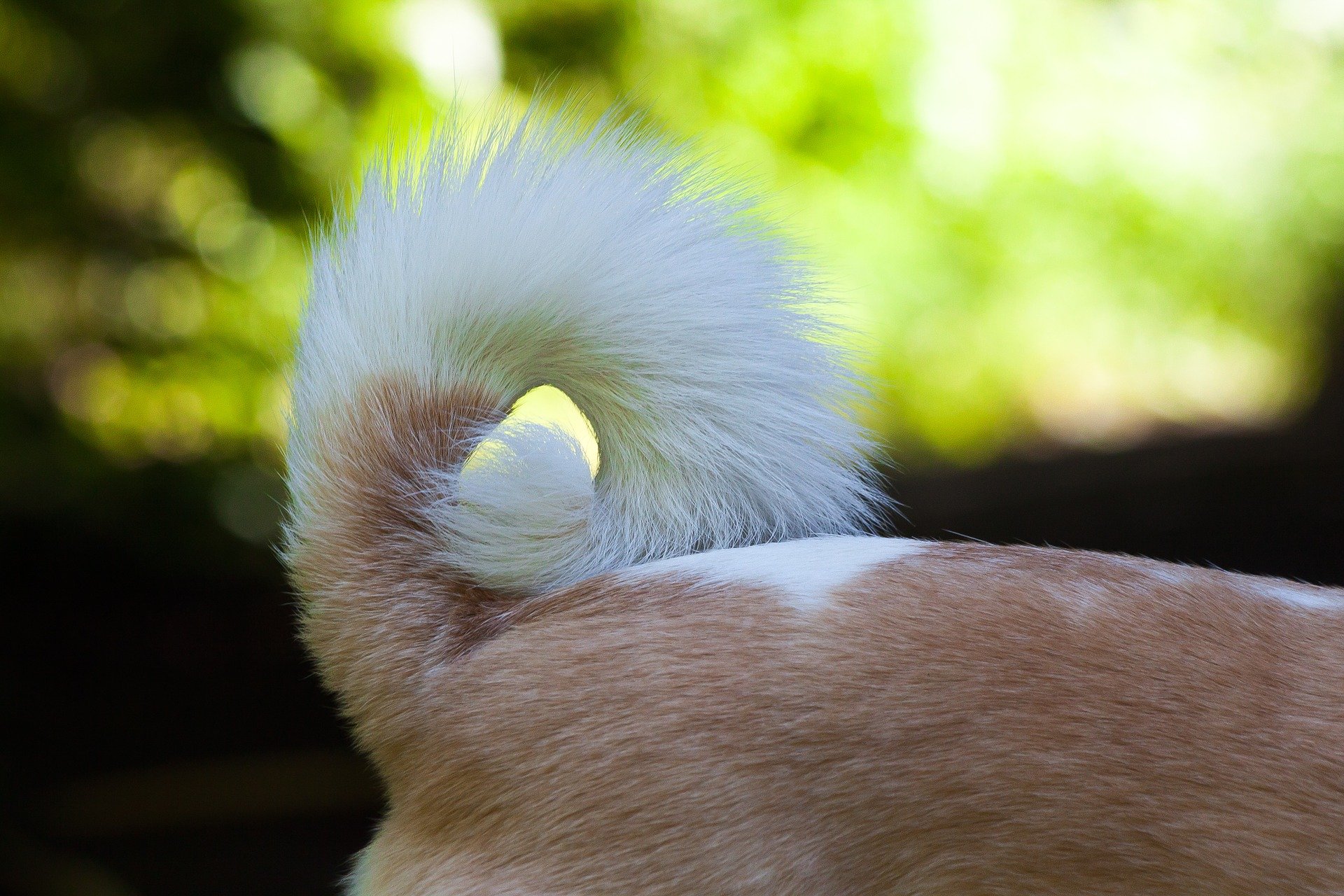Tail Injuries in Dogs
Tail wounds in dogs are not uncommon, especially in fighting dogs that can quickly suffer from more or less nasty bites. However, they deserve attention so as not to degenerate, but also when they are particularly severe and can then mean that your dog has been the victim of a trauma.
If some problems are obvious, other wounds are more insidious and turn into abscesses to the nose and beard of the owners who did not manage to detect early the small boo-boo of their pet. The best way to detect possible small injuries on your dog's tail is to inspect it regularly, along with the rest of his body.
Dog tail injuries
Basically, a dog's tail, also known as the caudal appendage, can suffer the same injuries as your dog's legs. This is because the tail is made up of bones (vertebrae), joints, muscles, nerves and skin, just like all the other parts of your dog's body.
Nevertheless, it is not subjected to the same efforts as the animal's legs, which preserves it from many traumas. If dislocations, sprains or tendonitis of the tail are extremely rare, fractures and open wounds are relatively common.
Tail fractures in dogs
Tail fractures in dogs are often easy to detect because the dog is in a lot of pain, is down, and will either cry to signal its discomfort, or seek isolation and oblivion to avoid exposing its weakness. The animal will also express its suffering through rapid breathing and an elevated heart rate, a lack of interest in its food and, sometimes, functional or psychological paralysis.
Since tail fractures are usually caused by violent shocks (fall, car accident, door closed on the dog...), it is possible that they are only the tip of the iceberg of the trauma your pet may suffer. In any case, you will have to take your dog to a veterinarian so that he can verify that the dog does not suffer from internal injuries due to the shock and can treat his tail in the rules of art.
A fractured tail may never regain its original mobility and shape, and some are left hanging for the rest of the dog's life.

Open tail wounds in dogs
Open tail wounds are common in fighting and hunting dogs, because their caudal appendage makes them an easy limb for a belligerent enemy to grab. Your dog may also have simply caught his tail in brambles or barbed wire, or jammed it moderately hard into a door.
In some cases, the dog's tail will bleed profusely, which can quickly panic the owner. Don't worry: a dog is not normally at risk of dying from a tail hemorrhage because there are no large blood vessels in the tail. Ideally, you should first soak your dog's tail in a basin of water or rinse it thoroughly in the shower to wash the wound and reduce the risk of infection.
The wound should then be thoroughly inspected to ensure that there are no foreign objects in it and that it is completely clean. If the wound is large or irregular, your dog should be taken to a veterinarian who may give him stitches or antibiotics to prevent infection.
If the wound is just a small boo-boo, you can disinfect it generously with a dog-friendly antiseptic (such as Betadine or Biseptine), then bandage it to protect the wound from outside pathogens. Don't forget to monitor and disinfect the wound twice a day, and any sign of infection (redness, heat, pus...) should lead you to the vet.
Dead Tail Syndrome in dogs
Dead Tail Syndrome is a sudden loss of vitality in the dog's tail, which suddenly becomes flaccid and painful. Relatively common, Dead Tail Syndrome has yet to be explained, although myositis may be involved in its occurrence.
Working dogs are the most affected by this phenomenon, and transport in a cage, cold climates or prolonged swimming seem to be predisposing factors. Genetic predisposition may also be involved, as Labradors and Pointers are more often affected by this condition than other dogs.
The syndrome is diagnosed by observing a flaccid, stiff, swollen, painful tail with bristly hair at the base. Usually, the syndrome disappears on its own in a few days without leaving any after-effects, but it can recur.
Like all the members of a dog's body, the tail can also suffer traumas that require a visit to the veterinarian. If small injuries can be treated at home - provided they are supervised - major fractures or wounds must be examined by a professional to avoid any risk of aggravation and not let your dog suffer.

